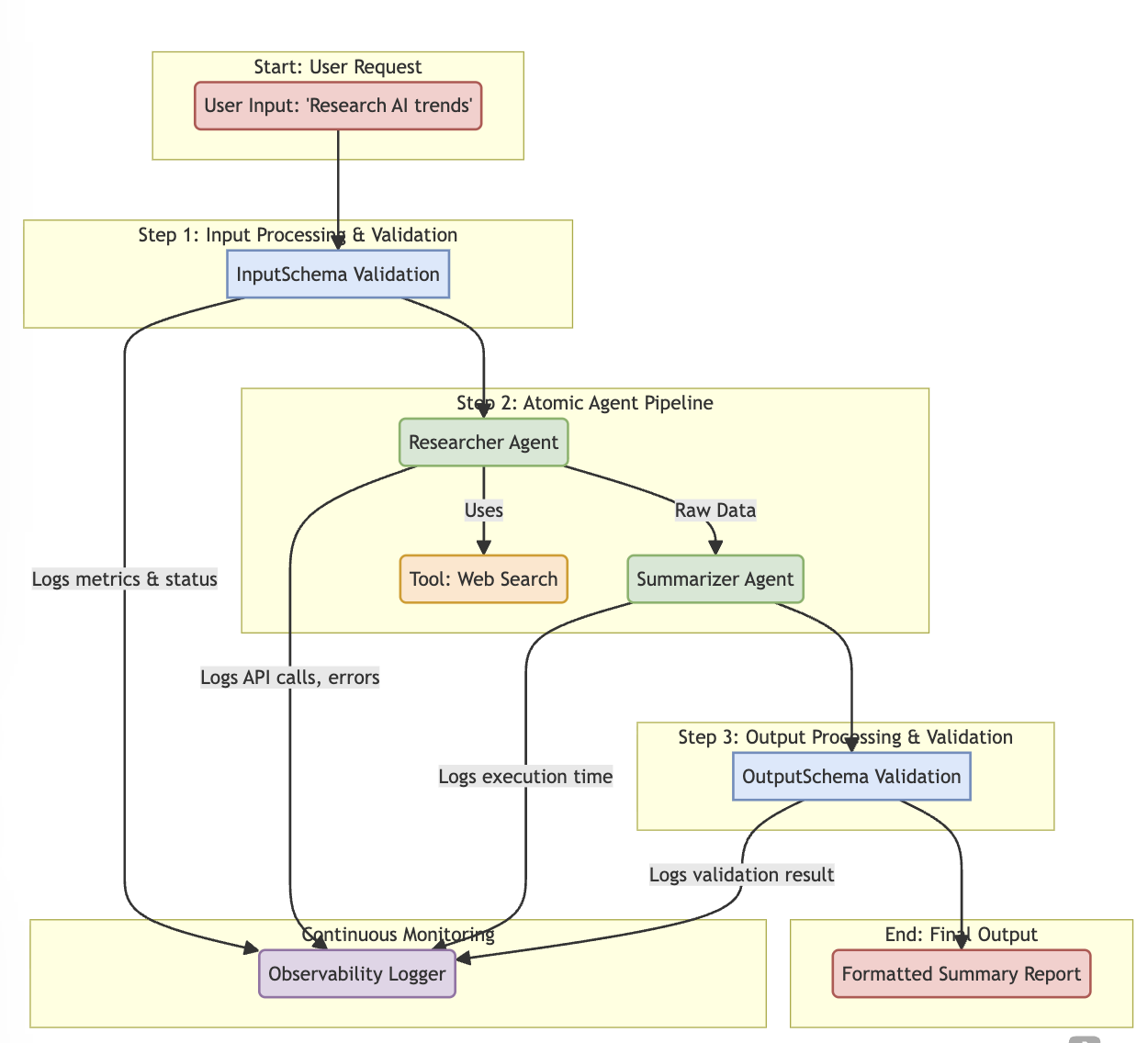From Hype to Reality: My Blueprint for a Production-Ready AI Agent
August 25, 2025
From Hype to Reality: My Blueprint for a Production-Ready AI Agent
If you’ve spent any time building with the current generation of AI frameworks, you’ve likely felt the sting of moving from a cool demo to a production environment. The promises of rapid development often give way to the harsh realities of spiraling costs, impossible debugging sessions, and brittle systems that don’t scale (source). It’s a common story: the tools that make prototyping easy often lack the transparency and control we need for real-world applications (source).
Frustrated with this cycle, I decided to step back and design a system based on a different philosophy, one that prioritizes production readiness from day one. I embraced the principles of the Atomic Agents framework, which focuses on modularity, transparency, and developer control (source). Instead of a “black box,” you get a set of simple, independent components you can assemble like LEGOs (source).
Here’s my end-to-end blueprint for a simple multi-agent system that researches a topic and writes a summary—a design built to avoid the typical production pitfalls.
The Blueprint: An Atomic Research & Summary System
The goal is to create an automated system that takes a user’s query, researches it online, and provides a formatted summary. The key here isn’t just to make it work, but to make it reliable, observable, and cost-effective.
Our system is built on four core principles:
- Schema-First I/O: Every process begins and ends with a strict, predefined schema. A
InputSchemavalidates the user’s request, and anOutputSchemaensures the final report is correctly formatted. This eliminates ambiguity and provides predictable, reliable behavior from the very start (source). - Single-Purpose Agents: Instead of one monolithic agent, I’m using two specialized “atomic” agents. The Researcher Agent has one job: take a query and use a web search tool to gather information. The Summarizer Agent also has one job: take that raw data and synthesize it into a coherent summary. They are simple, independent, and easy to test.
- Explicit Tooling: The Researcher Agent is explicitly given a
web-searchtool. There are no hidden, automatic tool selections or surprise LLM calls. This means I have full control over my costs and a clear understanding of the agent’s capabilities (source). - Native Observability: A central logger tracks the entire workflow from start to finish. It logs schema validations, tool usage, API calls, and execution times. This built-in transparency is the antidote to the “debugging hell” many of us have experienced with more abstract frameworks (source).
Visualizing the Workflow
To make this concrete, here’s a diagram of the entire end-to-end process. You can see the clear, linear flow and how the observability logger monitors every single step.

Why This Design Succeeds in Production
This “atomic” approach directly addresses the failures of more complex frameworks:
- It Eliminates Hidden Costs: Because every tool and API call is explicit and logged, there are no surprise budget overruns from inefficient, hidden processes (source).
- It Makes Debugging Simple: If the final summary is inaccurate, the logs will tell me exactly where the breakdown occurred. Was the raw data from the Researcher flawed, or did the Summarizer fail to synthesize it correctly? This clarity is a game-changer.
- It’s Flexible and Scalable: The modular design is incredibly adaptable. Need to add a fact-checking step? I can just slot in a “Fact-Checking Agent” between the researcher and summarizer without having to refactor the entire system. This avoids the rigidity that plagues other multi-agent frameworks (source).
- It’s Inherently Reliable: By enforcing schemas at the entry and exit points, the system is robust by design, ensuring it produces consistent, structured output every time.
Conclusion: Building for Reality, Not Demos
The shift to frameworks like Atomic Agents represents a move toward a more mature, engineering-focused approach to building with AI. While the allure of flashy, all-in-one solutions is strong, the future of AI development belongs to tools that empower developers with transparency, control, and reliability. By building with simple, “atomic” components, we can create AI systems that are not just impressive in a demo, but are truly ready for the demands of the real world.